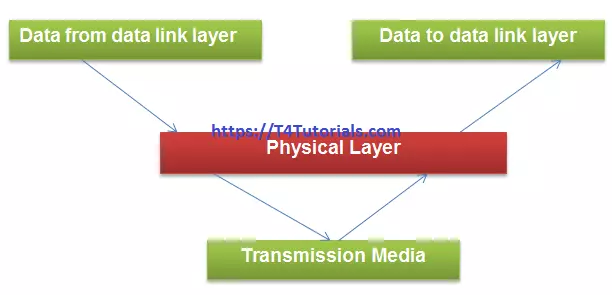Physical Layer in the OSI Model
The physical layer is the lowest layer of the seven layers of the OSI reference model. The physical layer is responsible for sending the data bits from the sender to the receiver. This layer does not focus on the meaning of the bits.
The physical layer just deals with the establishment of the physical connection of the device to the communication network, communication media and also deals with the reception of the signals. If you are interested to read the advantages and disadvantages of the OSI model, then you can click here.
Functions of Physical Layer in OSI Model
There are many functions that can be performed by the Physical layer of the OSI model. Some of the common functions are mentioned below.
1. Data Rate
The data rate is the rate of transmission that tells us what number of bits transferred per second.
2. Bits Representation:
Before the physical layer
Data in the physical layer consists of a stream of bits.
After the physical layer
The bits must be encoded into signals in such a way that they become able to transmit within the transmission path. The physical layer defines how bits can be changed to the signal.
3. Interface
This layer defines the transmission interface between devices and transmission medium.
4. Synchronization
The physical layer handles the synchronization of the sender and receiver.
5. Line Configuration
The physical layer connects devices with the medium. Some of the examples are mentioned below;
- Point to Point configuration
- Multipoint configuration etc
6. Transmission Modes
Physical Layer defines and ensures the direction of transmission between two devices. The direction of the data communication can be Simplex, Half Duplex, and Full-Duplex data transmission.
7. Physical Layer Deals with baseband and broadband data communication.
8. Topologies
The physical layer ensures that the devices must be connected with each other using the topologies. There are different kinds of topologies. Some famous topologies are bus topology, Mesh, Star, and Ring topology. If you are interested to read the topologies in detail, then you can click here.



